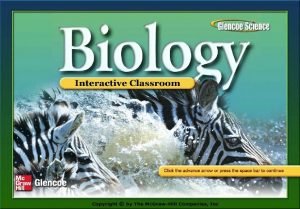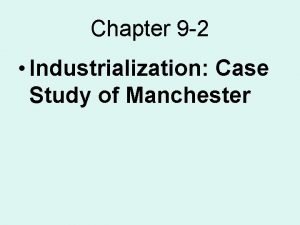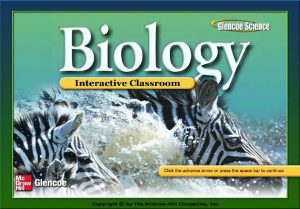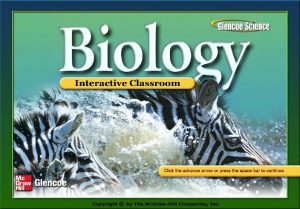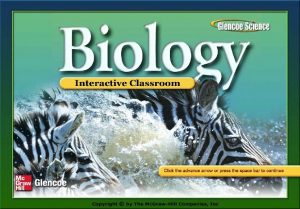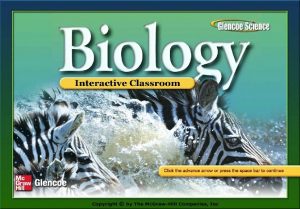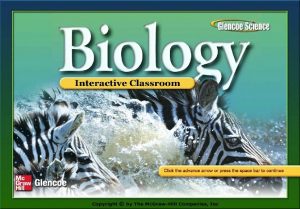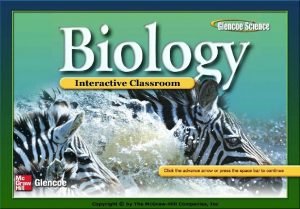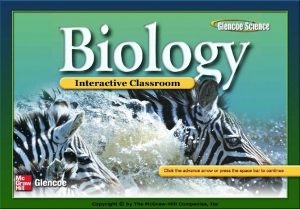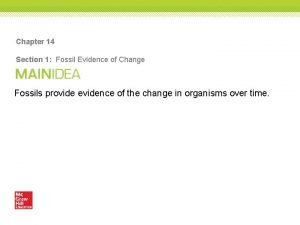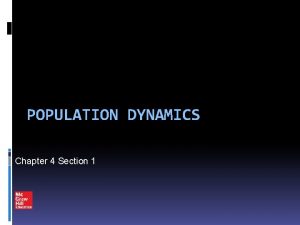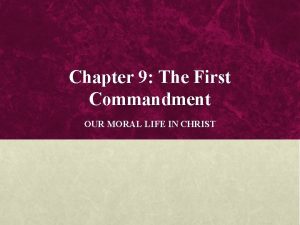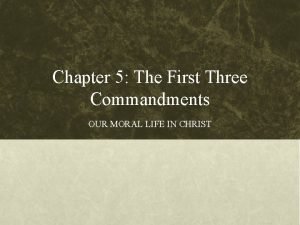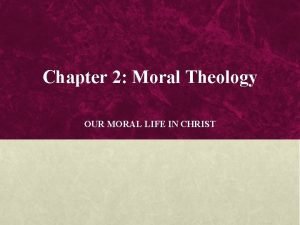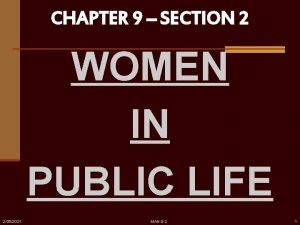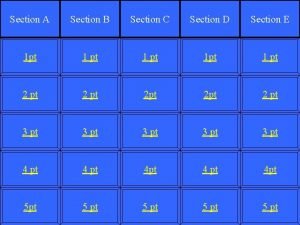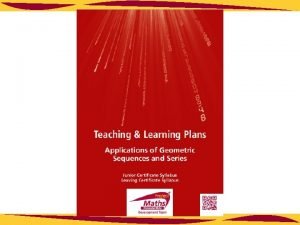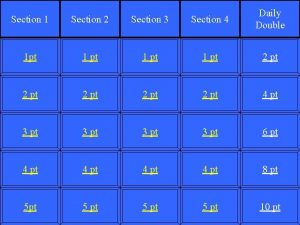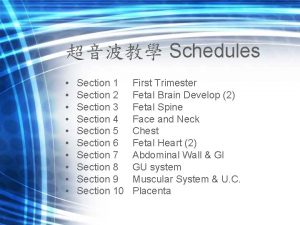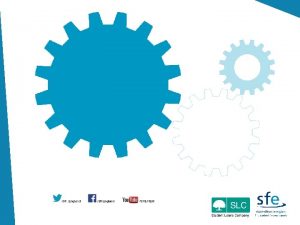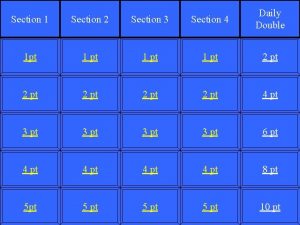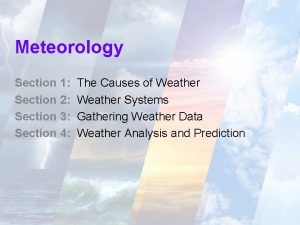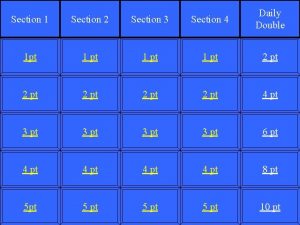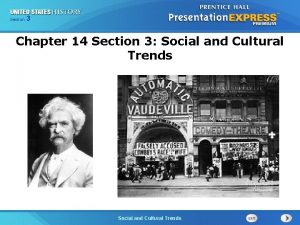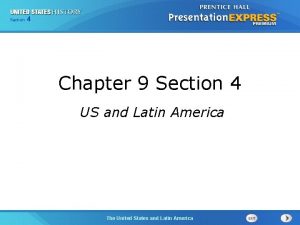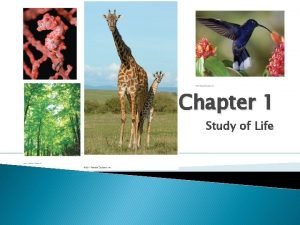Chapter 1 The Study of Life Section 1






















- Slides: 22

Chapter 1: The Study of Life Section 1. 2: Unifying Themes of Biology Section 1. 3: Scientific Thinking and Processes 1

I. What is Biology? Biology: The study of all living and once living things If you break it down: Bio = means Life logy = means the study of Biologist: A person who studies living and once living things 2

Earth is home to an incredible diversity of life l Biosphere - Bio = Life - sphere = circle l Biosphere = Earth ¡It is where all living things and all the places they are found. ¡Includes environments (ecosystems) such as deserts, grasslands, forests, saltwater and freshwater, etc. 3

l Biodiversity Video l Biodiversity - Bio = “life” - diversity = variety/differences l Biodiversity = all the variety of life across the biosphere. Why is biodiversity greater closer to the equator? l Species – is a particular type of living organism that can reproduce by interbreeding among themselves to produce fertile offspring. ¡ Approximately 10, 000 species discovered a year. ¡ Approximately 50, 000 species become extinct every year. 4

Characteristics of Life - Video What does it mean to be living? - To be considered LIVING, ALL Characteristics of Life must be met. - Organism – is any individual living thing. 1. All living organisms are made of CELLS l. The cell is the basic unit (building blocks) of structure and function in all living things (life) • Some organisms are unicellular - one-celled (all bacteria) • Some are multicellular - made of many cells Intro to cells video 5

Characteristics of Life 2. Need for Energy: Living organisms need a source of chemical energy. - Three ways an organism obtains food ¡Consumers – (Animals) that rely on other organisms for food. ¡Producers – (plants) make or produce their own food through photosynthesis. ¡Decomposers – (bacteria, fungi) Break down items by releasing digestive enzymes onto it. * Energy is important for metabolism! • Metabolism – all the chemical processes in the body that build up or break down materials. 6

Characteristics of Life 3. Living organisms RESPOND TO THE ENVIRONMENT ¡Organisms must react to a stimulus (stimuli) in their environment in order to survive. ¡A stimulus causes a reaction. l. Physical – light, temperature and touch. l. Reaction video 7

Characteristics of Life 4. Reproduction and Development - Reproduction - A process of creating offspring (new individuals of same species). *Includes the passing of genetic material, DNA, from parent to offspring. *DNA = Deoxyribonucleic Acid *This is Important for the survival of a species. *There are 2 types of reproduction. 8

TWO TYPES of REPRODUCTION A. Sexual Reproduction l Formation of a new organism by the of 2 reproductive cells egg) l The offspring will be genetically different from the parents. union (sperm and B. Asexual Reproduction video l Formation of a new organism from only 1 cell l Offspring will be genetically identical to the parent cell. ¡Example: a bacterial cell dividing into two identical cells. 9

Characteristics of Life - Development ¡ Organisms grow in size (length and width) using materials and energy from the environment ¡ As a living organism grows; body structures develop and change. l. Examples: • • Adolescents change into adults (puberty) Maggot develops into a fly Caterpillar develops into a butterfly Tadpole develops into a frog 10

11 http: //biology. kenyon. edu/fennessy/AMN%20 Wetland%20 Webpage/Comps%20 Webpage/usingamphibiansasindicatorsofwetlandintegrity. htm

II. Unifying Themes of Biology 1. All levels of life have systems of related parts. - System – is an organized group of related parts that interact to form a whole. - Examples: - Ecosystem Eco = environment System = related parts - Ecosystem – all the living and nonliving parts interacting with one another. - Ecosystem video 12

Unifying Themes of Biology l 2. Structure and Function are related. - What something does (function) in an organism is directly related to its shape or form (structure). - List five cell examples below: Structure Function 13

Unifying Themes of Biology 3. Maintaining Homeostasis in order to survive in diverse environments. - Homeostasis - Homeo = constant/remains the same - stasis = stable - Homeostasis – maintaining a constant internal condition with changing environmental conditions. - Examples - Body temperature and outside temperature - Shiver when cold - Sweat when hot - thirsty when you need water. - Blood sugar (glucose/insulin) 14 Video (girl) Homeostasis reaction video

Unifying Themes of Biology 4. Evolution explains the unity and diversity of life - Unity – how things are the same - Diversity – how they are different - Two organisms can be very different like a human and bacteria but can share similar cell characteristics. - Evolution – a change over a long period of time. - One way evolution occurs is through adaptations. - Adaptation - a trait that makes a living organism better able to survive. Evolution Video 15

1. 3 Scientific method A series of steps used to solve a problem 1. Make an observation - Use your senses to record data and study the world. - Observations can recorded as data. 1. Qualitative data - include descriptions such as sights, sounds, touch, taste and smells. 2. Quantitative data – can be measured or counted such as mass, volume, temperature. 16

Scientific method A series of steps used to solve a problem 2. Form a hypothesis- Based on your observations and data research, what do you think will happen? Or what could be a possible explanation? - A hypothesis is a proposed answer for a scientific question that can be tested. - Always written as an “if” “then” “because” sentence. - If I place in boiling water then the ice will melt because heat causes the molecules to move faster. - When data does not support a hypothesis, it is rejected. 17

Scientific method 3. Conduct a controlled experiment - Testing the hypothesis using a step-by-step procedure. - A controlled experiments tests 1 variable at a time. 1. An independent variable - a condition that is changed or manipulated by a scientist. - What you are testing. 2. A dependent variable – what you are observing and measuring during the experiment. - Everything in a controlled experiment remains constant (the same) except for one thing that 18 you change.

Scientific method 3. Controlled experiment continued - A controlled experiment needs to have 2 groups. 1. The experimental group – receives the independent variable. 2. The control group – is used for comparison to the experimental group. 19

Scientific method 4. Analyze the Data – Interpret the recorded results of the experiment in order to make a conclusion. 5. Draw a conclusion – Evaluate the results. - A conclusion should address the following: l Was the hypothesis correct? l How does the data support your conclusion? l Were there errors that might have changed the results? l How might those errors be avoided next time? 20

SCIENTIFIC METHOD CONTINUED - Experiments should be repeated many times to check the results for consistency. - If the results are not the same then a new hypothesis needs to be made. - A hypothesis can become a theory if it is tested over and over again and is supported with a wide range of evidence. ¡ A theory can be used to predict the outcome of other events. ¡ Theories are not proven to be true. ¡ Theories can change based on new evidence. 21 ¡ Are supported by a wide range of evidence.

SCIENTIFIC METHOD CONTINUED 22
 Chapter 1 section 1 introduction to biology
Chapter 1 section 1 introduction to biology Section 1 community ecology
Section 1 community ecology Industrialization case study manchester
Industrialization case study manchester Chapter 5 biodiversity and conservation test answer key
Chapter 5 biodiversity and conservation test answer key Chapter 4 population dynamics study guide answers
Chapter 4 population dynamics study guide answers Study guide chapter 35 section 1 the digestive system
Study guide chapter 35 section 1 the digestive system Chapter 31 section 1 basic behaviors study guide answer key
Chapter 31 section 1 basic behaviors study guide answer key Chapter 29 section 1 reptiles
Chapter 29 section 1 reptiles Chapter 28 section 1: fishes study guide answer key
Chapter 28 section 1: fishes study guide answer key Chapter 18 section 2 viruses and prions
Chapter 18 section 2 viruses and prions Chapter 16 primate evolution assessment answer key
Chapter 16 primate evolution assessment answer key Chapter 14 section 1 fossil evidence of change study guide
Chapter 14 section 1 fossil evidence of change study guide Population ecology section 1 population dynamics answer key
Population ecology section 1 population dynamics answer key Study guide chapter 4 section 1 population dynamics
Study guide chapter 4 section 1 population dynamics Chapter 10 section 1 meiosis worksheet answer key
Chapter 10 section 1 meiosis worksheet answer key Our moral life in christ chapter 9 study questions
Our moral life in christ chapter 9 study questions Our moral life in christ chapter 5 study questions
Our moral life in christ chapter 5 study questions Moral act
Moral act Our moral life in christ chapter 2 study questions
Our moral life in christ chapter 2 study questions Chapter 11 section 3 life during wartime
Chapter 11 section 3 life during wartime Chapter 11 section 3 guided reading life during wartime
Chapter 11 section 3 guided reading life during wartime Chapter 6 section 1 price supply and demand together
Chapter 6 section 1 price supply and demand together Chapter 9 section 2 women in public life
Chapter 9 section 2 women in public life
